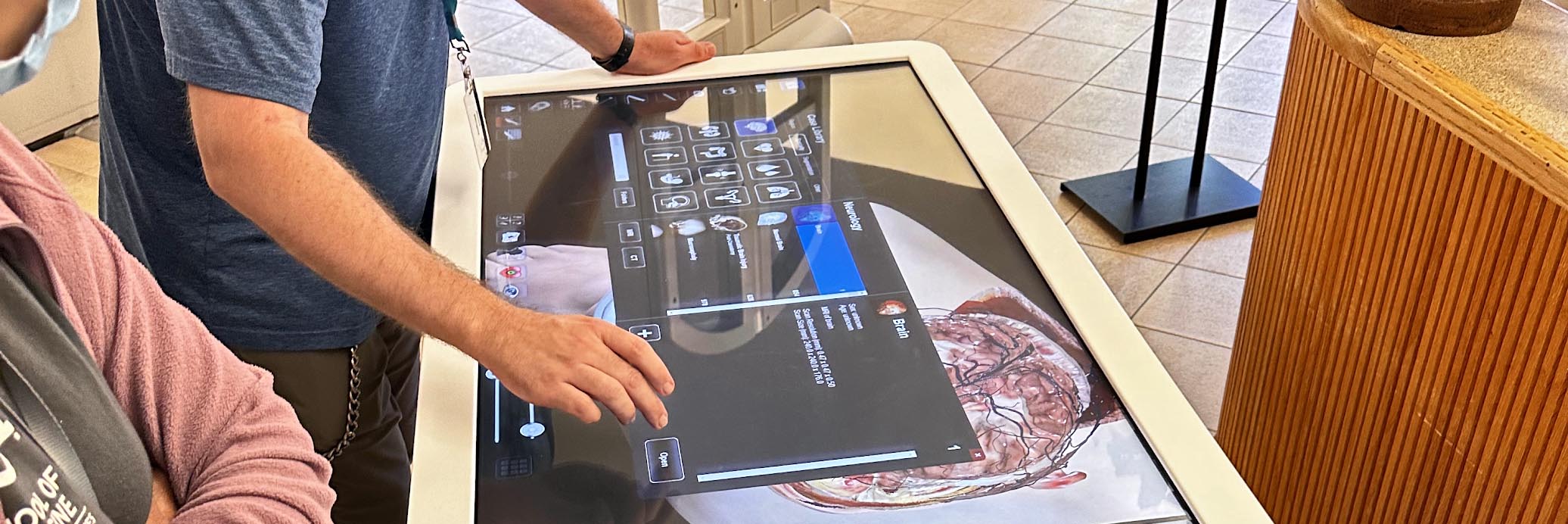Technological advancements have helped us ease day-to-day routines and lead more comfortable lives.
The same goes for education – with technology, access to information has never been simpler.
Health Sciences Library and Informatics Center (HSLIC) staff work continuously to evolve the library and make it more technologically friendly and inviting for The University of New Mexico Health Sciences community.
As part of that dedication, HSLIC staff recently announced the acquisition of new technology that will aid students with their education.
We are thrilled to offer these technologies on the Health and Health Sciences campus, and we look forward to seeing the ways people create, innovate and explore as they learn
“We are thrilled to offer these technologies on the Health and Health Sciences campus, and we look forward to seeing the ways people create, innovate and explore as they learn,” said HSLIC Executive Director Melissa Rethlefsen, MSLS, AHIP.
On Oct. 11, library staff highlighted their commitment to information and technology access during the 45th HSLIC building anniversary celebration with Health Sciences faculty, staff and students.
As part of the celebration, HSLIC staff demonstrated the new Anatomage Table, a 3D anatomy visualization and virtual dissection tool for anatomy and physiology education.
Located near HSLIC’s main lobby entrance, the table shows a fully segmented real human 3D anatomy system at life-size scale. Users can visualize anatomy exactly as they would on a fresh cadaver by using the touch screen. Individual structures are accurately reconstructed in 3D, resulting in an unprecedented level of real and dissectible anatomy.
The table is ready for use to all UNM Health Sciences students, staff and faculty, as long as users show their ID badge. As no sign-ins are necessary, the table operates on a first-come, first-served basis.
“The main purpose of the table was to be able to provide a location that students can come to so they can do their individual studies,” said HSLIC Facilities Services Manager Wendell L. Billingsley. “For example, let’s say a student is working on an orthopedics project and they don’t have the capability of seeing a cadaver to be able to study the muscle structure or bone structure. They can utilize the anatomy table to study and look up all of those things.”
Also new to the library is a 3D printer, which can create instructional tools such as 3D models of molecules or those of human anatomy. Library Information Specialist Jonathan Seyfried, MA, said the printer can be used as an educational tool across health care curriculums.
“There’s a growing trend in medical libraries to make technology like this available,” Seyfried said. “For example, students who want to see something that’s not already in one the anatomical models, or pharmacy students might want to print out a 3D model of a particular molecule that’s going to be helpful for them to manipulate.”
HSLIC continues to play a key role in supporting the health information needs of the state as New Mexico’s only publicly accessible health sciences library.
Construction began on the current library building in July 1974 with a $2.24 million federal grant from the Department of Health, Education and Welfare. The building officially opened on June 6, 1977.
The building encompasses more than 37,000 square feet of technology-infused space, including 33 computer workstations, group study spaces, individual study rooms, a virtual reality suite, a wellness room, a lactation room and classrooms.
“This is a really special place for so many people,” Rethlefsen said. “All employees, past and present, have done such a great job making this a wonderful building and a wonderful suite of services and resources that support UNM Health Sciences’ education, research and clinical practices.”


